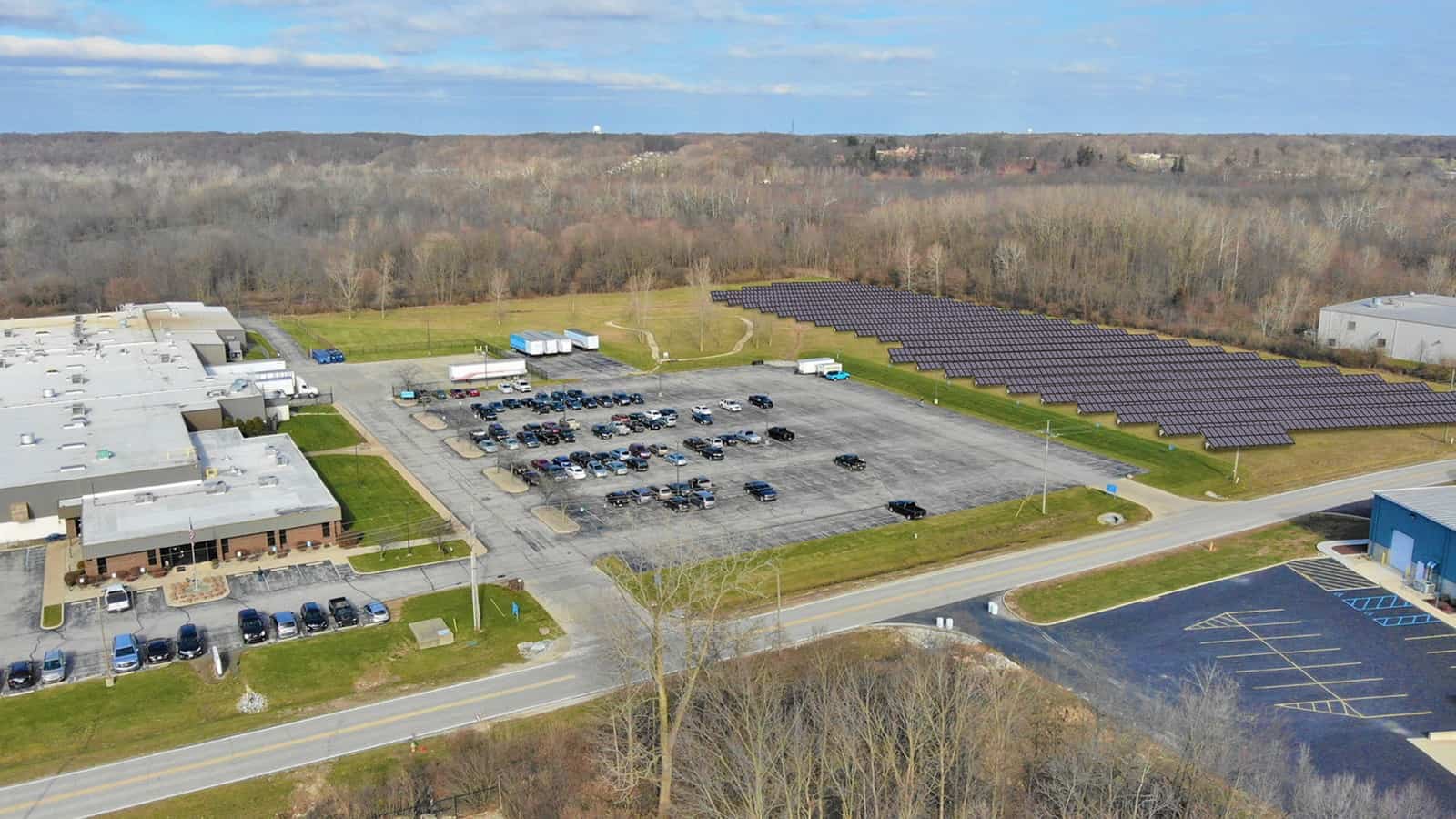Manufacturers Are Solution For Healthier Environment
Not every societal problem demands a state attorney general investigation
Washington, D.C. – National Association of Manufacturers Chief Legal Officer Linda Kelly issued the following statement in response to California Attorney General Rob Bonta’s announcement of an investigation into fossil fuel and petrochemical industries:
“Not every societal problem demands a state attorney general investigation or adversarial legal process. In fact, anyone who understands the manufacturing sector would know that we are the solution here. Manufacturers are pioneering the technologies, processes and products, including advanced recycling, that are needed to protect our environment, improve sustainability and move toward a circular economy.
“Plastics play a vital role in modern life and improving quality of life. Solutions to waste issues require collaboration with government, consumers and manufacturers. Manufacturers are ready to be collaborative partners with anyone who shares our commitment to a healthier environment.”
-NAM-
The National Association of Manufacturers is the largest manufacturing association in the United States, representing small and large manufacturers in every industrial sector and in all 50 states. Manufacturing employs more than 12.5 million men and women, contributes $2.71 trillion to the U.S. economy annually and accounts for 58% of private-sector research and development. The NAM is the powerful voice of the manufacturing community and the leading advocate for a policy agenda that helps manufacturers compete in the global economy and create jobs across the United States. For more information about the NAM or to follow us on Twitter and Facebook, please visit www.nam.org.
Manufacturers Urge Caution on EPA “Good Neighbor” Plan
NAM: While the intent of this proposal is right and one that we share, it could have significant effects on American families
Washington, D.C. – Following the Environmental Protection Agency’s release of its “Good Neighbor” Plan to expand regulation of interstate transport of air emissions that affect downwind states’ ability to attain and maintain National Ambient Air Quality Standards, National Association of Manufacturers Senior Vice President of Policy and Government Relations Aric Newhouse released the following statement:
“Manufacturers are committed to clean air and healthy communities. We have taken the initiative to operate in cleaner, more sustainable ways, and we are proud of our record. Our ‘Promise Ahead’ proposal offers numerous ideas on how we can continue to improve our environment and address climate change.
“While the intent of this proposal is right and one that we share, it could have significant effects on American families if not thoughtfully implemented. At a time when our supply chains are snarled, inflation is skyrocketing and Russia’s war on Ukraine continues, we must be careful with regulations that could further raise prices on all Americans, slow economic growth and threaten jobs.
“We will work with the EPA to ensure these new rules can achieve shared goals in a constructive way that will not have unintended consequences and ripple effects throughout our economy and communities. We look forward to sharing our innovation, technology and supply chain expertise to do so.”
-NAM-
The National Association of Manufacturers is the largest manufacturing association in the United States, representing small and large manufacturers in every industrial sector and in all 50 states. Manufacturing employs more than 12.5 million men and women, contributes $2.57 trillion to the U.S. economy annually and has the largest economic multiplier of any major sector and accounts for 58% of private-sector research and development. The NAM is the powerful voice of the manufacturing community and the leading advocate for a policy agenda that helps manufacturers compete in the global economy and create jobs across the United States. For more information about the NAM or to follow us on Twitter and Facebook, please visit www.nam.org.
Manufacturers on Kigali: We Can Tackle Climate Change While Strengthening Our Global Competitiveness
Washington, D.C. – Following President Biden’s sending of the Kigali Amendment to the Montreal Protocol for ratification by the Senate, the National Association of Manufacturers Vice President of Energy and Resources Policy Rachel Jones released the below statement:
“Manufacturers thank President Biden for submitting the Kigali Amendment to the Senate and urge bipartisan support for ratification. We can tackle climate change while strengthening our global competitiveness as we transition to next-generation technologies.
“By joining the more than 125 countries that have already ratified the Amendment, we have set ourselves on a path to create up to 150,000 jobs in the United States and aid in the reduction of billions of tons of CO2 in the atmosphere. We urge policymakers to support Kigali ratification and prove that smart policy can be a win for the economy and the environment.”
-NAM-
The National Association of Manufacturers is the largest manufacturing association in the United States, representing small and large manufacturers in every industrial sector and in all 50 states. Manufacturing employs more than 12.5 million men and women, contributes $2.5 trillion to the U.S. economy annually and has the largest economic multiplier of any major sector and accounts for 58% of private-sector research and development. The NAM is the powerful voice of the manufacturing community and the leading advocate for a policy agenda that helps manufacturers compete in the global economy and create jobs across the United States. For more information about the NAM or to follow us on Twitter and Facebook, please visit www.nam.org.
SEC Previews Climate Rules

Securities and Exchange Commission Chairman Gary Gensler said that the agency will release proposed rules by the end of this year requiring that public companies disclose risks related to climate change, according to MarketWatch.
What they’ll cover: Chairman Gensler indicated that he wants climate disclosures to be “consistent and comparable” and provide decision-useful information to investors. He said staff is considering whether such disclosures would be included in companies’ 10-K filings, whether they would include Scope 1, Scope 2 and/or Scope 3 emissions and whether certain metrics would be required for specific industries.
The challenge: Many manufacturers already voluntarily disclose a significant amount of information about their climate efforts, but an overbroad mandate could impose new cost burdens on companies without providing useful information to shareholders.
What we’re doing: The NAM has consistently stood up for manufacturers, encouraging the SEC to adopt a principles-based approach rather than a uniform mandate. Back in June, the NAM laid out the manufacturing industry’s perspective for the SEC and provided a list of principles that should guide any eventual disclosure framework. As the process moves forward, the NAM will continue to engage with the SEC and advocate for manufacturers.
Learn more: For more information about our principles and the work the NAM has been doing in this area, check out this recent story.
NAM Lays Out ESG Disclosure Priorities

Across the country, manufacturers are deeply involved in efforts to improve their climate stewardship and take action on a wide range of environmental, social and governance (ESG) issues. Manufacturers are leaders in everything from combatting climate change to enhancing diversity and inclusion in the workforce—and in ensuring that investors understand everything that goes into this critical work.
Recently, the Securities and Exchange Commission began considering a disclosure framework that could require companies to provide standardized information on their climate and ESG commitments. The agency has opened a comment period to receive public input on what the framework could include, and the NAM is making sure that manufacturers’ voices are heard.
NAM Senior Director of Tax and Domestic Economic Policy Charles Crain recently spoke to us about this issue, describing manufacturers’ priorities and concerns. Here’s what you need to know.
The challenge: Many companies already voluntarily disclose a great deal of information about their climate and ESG efforts—both because they are proud of the work they do, and because they believe it’s important for investors to have all the information available, Crain says. However, a one-size-fits-all SEC mandate could create more problems than it solves by imposing costly or overly broad requirements that do not provide useful information to shareholders.
Our move: This week, the NAM laid out the manufacturing industry’s perspective for the SEC, including a list of principles that should guide the agency’s decision-making. Those principles include the following:
- Materiality: The NAM believes that companies should be required to disclose information only if it is material to their business—that is, company-specific, relevant, useful information that would change a reasonable investor’s view of a company.
- Flexibility: Different items are material for different companies. Disclosures shouldn’t be one-size-fits all, but should instead include the kind of company-specific information that will reflect the diversity of risks and opportunities that businesses face and thus be useful to investors.
- Clarity and comparability: The current lack of standardization can create costs and uncertainty for both companies and investors. Within a flexible, materiality-driven framework, the SEC can enhance the clarity and comparability of climate and ESG information disclosed by businesses.
- Limiting company costs and liability: New SEC mandates shouldn’t overburden companies with high costs or a strict liability burden—both of which could result in limited or boilerplate reporting that isn’t useful to investors. Many of companies’ climate and ESG goals are aspirational and rely on evolving reporting methodologies, and the SEC shouldn’t disincentivize aggressive goal-setting on these issues.
- Appropriate scope and reasonable timelines: The data the SEC is describing isn’t just sitting on the shelf. In order to disclose climate and ESG information under a new framework, many companies could have to build out data collection infrastructure, go deep into the supply chain, and get information through standardized methodologies that may not currently exist. This process will be time-consuming and difficult, and the SEC will need to tailor any requirements accordingly and give companies time to adapt.
- Don’t reinvent the wheel: Many companies are already disclosing climate and ESG information based on existing methodologies, and there are plenty of third-party standards for reporting this data. Rather than starting from scratch, any SEC framework should align with existing practices that many companies are already using.
Next steps: The SEC will consider the NAM’s recommendations, along with other feedback, as it works toward a potential rule proposal—and the NAM will continue to engage with the SEC throughout the process.
It’s Time to Take Methane Seriously

Methane, a more powerful greenhouse gas than CO2, is back in the news again, as the Biden administration takes steps to regulate it. As it happens, reducing harmful pollutants like methane is a key priority of the NAM’s work on climate action. We spoke with NAM Vice President of Energy and Resources Policy Rachel Jones recently about the NAM’s advocacy on the issue.
The background: Recently, the EPA announced that it would craft regulations on methane, a shift from the previous administration’s refusal to directly regulate it, Reuters reports. The agency will unveil new regulations later this year.
Meanwhile, the Senate passed a resolution that “effectively reinstates” the Obama administration’s standards, according to The New York Times (subscription). The House is expected to consider the resolution soon.
The NAM’s position: “Getting the U.S. methane strategy right is critical for climate action and will set the bar for the rest of the world,” says Jones. “As the EPA moves to write new methane regulations, manufacturers are working with the agency to share our expertise. We support technology-based standards that reward early and aggressive action, while providing the flexibility to promote innovation and ensure we get the most reductions at the lowest cost. That would be a real win–win.”
- “The balancing act is important here because manufacturers rely on natural gas,” Jones adds. “The richness of this resource has redefined America’s competitive advantages within the global economy, especially within the manufacturing sector. We can’t afford to lose that if we fail to get regulations right.”
The energy mix: “A lot of people also don’t realize how natural gas supports the increasing role renewables are playing, because the sun and wind are intermittent sources of energy,” Jones says. “Natural gas can be ramped up or down quickly, making it the best option for balancing the intermittent nature of many renewables.”
Energy security: Jones adds that methane regulations are essential to long-term U.S. energy security for two reasons: they will help ensure electricity stability by supporting the combination of natural gas and renewables described above, and they will strengthen America’s position as a robust exporter of LNG.
- “Achieving gold standard status for methane management is now the price of admission to global LNG trade,” Jones explains. “If producers in the U.S. can show they are managing methane responsibly, they will find even more eager buyers.”
The last word: NAM President and CEO Jay Timmons said, “Climate change is an issue our generation must tackle. Like past generational challenges—world wars, the space race, the COVID-19 response and vaccine development—manufacturers will lead the way and ensure our country emerges stronger. When have Americans ever been timid in the face of difficulty? We look forward to learning more specific details of the administration’s methane strategy, and manufacturers are ready to work with policymakers on both sides of the aisle to achieve success for our nation and world.”
Read more about the NAM’s climate policy recommendations in The Promise Ahead.
How a Manufacturer Left Landfills Behind

Bendix Commercial Vehicle Systems sends almost none of its waste to landfills. A manufacturer of safety, air management and braking system technologies, the company cut its energy use by 14 million kilowatt-hours over the past six years. And it’s now building a 1.168-megawatt solar array near its Indiana facility.
That’s only the start for the Ohio-based manufacturer. In the past few years, Bendix has become a leader in sustainable manufacturing, adding sustainable design to its buildings and emphasizing sustainability in everything from employee training to production. The company has also been recognized for its achievements: In April 2020, Bendix received an award for “environmental excellence” from the Ohio Environmental Protection Agency, and recently the company won an award from the U.S. Department of Energy for its outstanding energy management.
“Even during a year when many activities had to be modified, curtailed or held remotely, our team members stayed true to our sustainability mission and to our overall energy strategy,” said Bendix Director of Corporate Responsibility and Sustainability Maria Gutierrez.
So how did they do it?
What it takes: “Our approach is built on a hierarchy that calls for each location to first eliminate, then reduce, reuse, recycle and reclaim—and as a final option when these strategies are not available, to utilize waste-to-energy technologies or incineration,” said Bendix Corporate Manager of Environmental and Sustainability Bill Schubert.
- The entire company sent fewer than 16 tons of material to landfills in 2020, a 97% decrease from the 508 tons in 2019.
- Bendix has done everything from eliminating plastic water bottles and Styrofoam to conducting “spent material audits”—more commonly known as dumpster dives—to ensure recyclables don’t go to waste.
- Its 4,100 employees are also chipping in: worker-led teams coordinate “green” projects, which continued even during the pandemic.
What’s next: At its Huntington, Indiana, manufacturing campus, Bendix is constructing a solar array that is expected to be operational in September 2021. It will produce more than 30% of the site’s electricity requirements and is slated to save $140,000 in utilities annually.
- Bendix also aims to cut carbon emissions in half by 2030 across its entire North American operations. The larger goal: to be entirely carbon neutral by 2050.
The last word: “Taking a creative approach to addressing challenging waste and improving energy efficiency remained a key theme for Bendix during all of 2020, and our efforts certainly paid off,” said Gutierrez. “Now, we’re focused on the next steps of our long-term energy plans, which are just as exciting.”
Timmons: Sustainable Keystone XL Project Is Model for Future Infrastructure
Walking Away Could Cost 10,000 Jobs
Washington, D.C. – Following President Joe Biden’s executive order to rescind the permit for the Keystone XL project, National Association of Manufacturers President and CEO Jay Timmons released the following statement:
“Manufacturers are disappointed with the administration’s decision to block this sustainable project, which can serve as a model for infrastructure of the future, and if not reconsidered, represents a missed opportunity for manufacturing workers in America. The Keystone XL project would employ 10,000 union workers for pipeline construction, spur additional renewable energy projects, operate with net-zero emissions and improve our energy security.
“This critical union project has evolved over the past five years, so we look forward to highlighting the importance of this modern project for manufacturers. Rebuilding our economy will require us to invest in infrastructure of all types, including Keystone XL. Manufacturers have a strong commitment to responsible environmental stewardship, and protecting our environment does not require us to walk away from this job-creating opportunity.”
Recently, the NAM and several labor unions wrote to President Biden on the impact of rescinding the permit for the Keystone XL project and the ways the project has evolved in recent years.
-NAM-
The National Association of Manufacturers is the largest manufacturing association in the United States, representing small and large manufacturers in every industrial sector and in all 50 states. Manufacturing employs more than 12.3 million men and women, contributes $2.32 trillion to the U.S. economy annually and has the largest economic multiplier of any major sector and accounts for 63% of private-sector research and development. The NAM is the powerful voice of the manufacturing community and the leading advocate for a policy agenda that helps manufacturers compete in the global economy and create jobs across the United States. For more information about the NAM or to follow us on Twitter and Facebook, please visit www.nam.org
NAM Reinforces Climate Priorities

As a new administration and Congress begin their terms in Washington, the NAM is reminding policymakers that manufacturers work hard to safeguard our environment. A longtime advocate of climate policies that promote manufacturing jobs in America, the NAM has now compiled its recommendations in a paper called “The Promise Ahead.”
The big idea: Climate change is a global problem that requires a global solution, which is why it’s critical for the United States to work in tandem with other countries. And while all nations need to be involved in promoting climate action, there should also be room for the kind of science-led innovation that American manufacturers have already demonstrated and will continue to provide.
- As it says in the paper, “Manufacturing holds the key to solving this global challenge. Think about the technologies that will get us there. Clean energy. Carbon capture. Batteries. Microgrids. Efficiency. Advanced vehicles. Manufacturers make these products and technologies and will continue to invent new ones.”
A push for global action: The plan recommends negotiating and ratifying a binding international climate action treaty that is both fair and enforceable, a position the NAM has long held. This will ensure that the United States does not suffer a competitive disadvantage and can lead the way in developing job-creating technologies and products.
A roadmap for results: The plan also offers guidelines for a national approach to climate change, adhering to three core principles that have always guided the NAM’s climate strategy:
- One unified policy: Instead of the patchwork of federal, state and local climate change regulations that manufacturers currently face, the industry needs a clear federal policy that offers predictability, consistency and certainty while meeting science-based targets. Businesses should be able to plan for the future—and shouldn’t have to worry that the policies of today will be different tomorrow.
- A level playing field: Any national policy to address emissions should be economy-wide and apply to all emitters. Congress should develop plans that don’t unduly burden one sector over another, and manufacturers shouldn’t be expected to shoulder the already-high cost of new regulations alone.
- Consumer choice and competitiveness: This policy approach shouldn’t automatically involve a mandated phaseout of any manufactured product. Instead, policymakers should lead with the tools and strategies manufacturers need to improve products, preserving consumer choice and supporting the innovation that manufacturing provides.
Immediate actions: The blueprint also offers some bipartisan actions that could be taken now and reduce emissions immediately. These proposals include the following:
- Investing in energy and water efficiency
- Funding and expanding climate and clean energy R&D programs
- Paving the way for a smart grid
- Commercializing and deploying carbon capture, utilization and storage technology
- Ratifying the Kigali Amendment, which sets a global path for phasing down HFCs
The last word: “It’s remarkable to see the commitments manufacturers are making to the health of our communities, our country and our world—which is why we have consistently led the drive for climate innovation,” said NAM Vice President of Energy and Resources Policy Rachel Jones. “We need a national and international approach that unleashes our efforts. Our plan is designed to create a rallying point for that approach and spur sustainable economic and environmental progress.”
Manufacturers Outline Executive Action Policy Priorities for Incoming Administration
Washington, D.C. – The National Association of Manufacturers called on President-elect Joe Biden to help ensure the future strength of manufacturing in America by extending key executive orders into the new administration and rescinding those that have harmed manufacturing.
“For decades, we have worked with policymakers from across the ideological spectrum to craft policies that encourage the growth of manufacturing in the United States,” said NAM President and CEO Jay Timmons in a letter to the incoming administration. “Now more than ever, America needs leaders in Washington who are focused on increasing American jobs, wages and investment.”
The letter outlines executive orders that have had a significant impact, positive or negative, on manufacturers over the past four years, and it urges the president-elect “to reverse the most harmful of these orders and keep or expand those that create an environment that is conducive to growing America’s manufacturing sector.”
The NAM’s recommendations will help manufacturers continue to respond to the devastating pandemic and will also power the United States’ economic recovery by setting the stage for manufacturing growth.
To read the full letter, click here.
Background:
The NAM has requested President-elect Biden repeal the following executive orders and consider executive orders for extension.
Executive Orders
Rescind:
- “Rescission of the Deferred Action for Childhood Arrivals Program”
- E.O. 13950 – “Combating Race and Sex Stereotyping”
- E.O. 13672 – “Revocation of Federal Contracting”
- E.O. 13769 – “Protecting the Nation from Foreign Terrorist Entry into the United States”
- “President’s Report to Congress on the Proposed Refugee Admissions for FY 21”
- Presidential Proclamation 10052 – “Suspending Entry of Aliens Who Present a Risk to the U.S. Labor Market Following the Coronavirus Outbreak”
- E.O. 13944 – “Ensuring Essential Medicines, Medical Countermeasures and Critical Inputs Are Made in the United States”
- E.O. 13948 – “Lowering Drug Prices by Putting America First”
- E.O. 13957 – “Creating Schedule F in the Excepted Service”
Extend:
- E.O. 13771 – “Reducing Regulation and Controlling Regulatory Costs”
- E.O. 13805 – “Establishing a Presidential Advisory Council on Infrastructure”
- E.O. 13766 – “Expediting Environmental Reviews and Approvals for High-Priority Infrastructure Projects”
- E.O. 13845 – “Continuing the President’s National Council for the American Worker and the American Workforce Policy Advisory Board”
- E.O. 13932 – “Modernizing and Reforming the Assessment and Hiring of Federal Job Candidates”
- E.O. 13777 – “Enforcing the Regulatory Reform Agenda”
- E.O. 13806 – “Assessing and Strengthening the Manufacturing and Defense Industrial Base and Supply Chain Resiliency of the United States”
- E.O.s – “Strengthening the Federal Government’s Anti-Counterfeiting Efforts”
-NAM-
The National Association of Manufacturers is the largest manufacturing association in the United States, representing small and large manufacturers in every industrial sector and in all 50 states. Manufacturing employs more than 12.3 million men and women, contributes $2.32 trillion to the U.S. economy annually and has the largest economic multiplier of any major sector and accounts for 62% of private-sector research and development. The NAM is the powerful voice of the manufacturing community and the leading advocate for a policy agenda that helps manufacturers compete in the global economy and create jobs across the United States. For more information about the NAM or to follow us on Twitter and Facebook, please visit www.nam.org.
